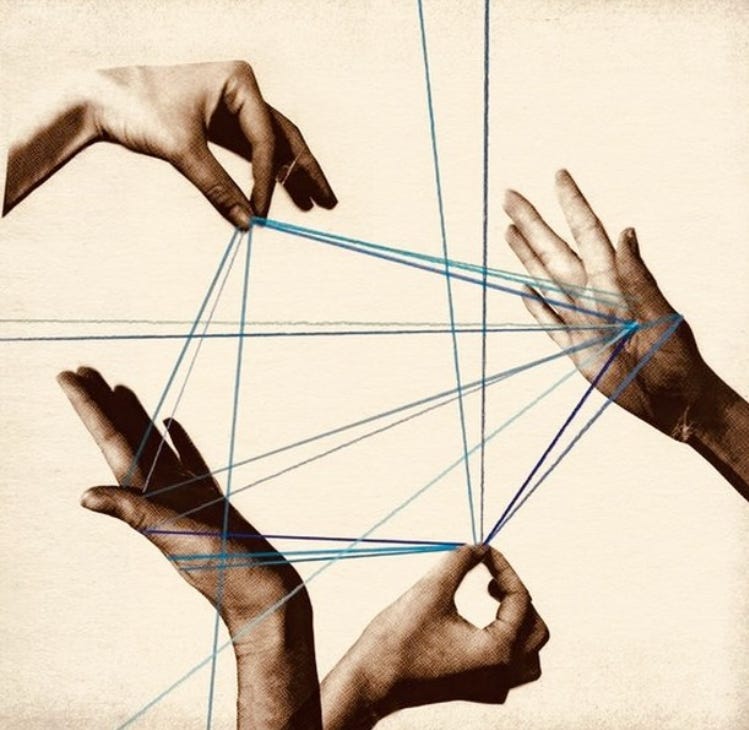Welcome to Present Sense – a weekend curation for Paid Subscribers – with 7 sensory recommendations: something to SEE, HEAR, SMELL, TASTE, TOUCH, BALANCE and ENVISION.
How did we have the same idea? At the same time?
We’ve all had experiences of a friend calling the very moment we’re thinking of them. We delight in the serendipity, the possibility of telepathy, and the affirmation that we are indeed connected with one another in mysterious ways.
But when it comes to our creative work, it’s a different story. If someone has the same creative idea as us, we feel vexed, defensive, and insecure. And yet, anytime I create, I confront this dilemma. Not only has it been done before, it’s also being done right now.
Whenever I share a new piece of writing, I often come across a very similar essay, written by someone else and often published around the same time. My ego mind jumps to two conclusions: I should have published mine sooner and/or my idea isn’t original (someone else thought it too). Either way, I often feel deflated.
But what if this was further proof that we are indeed connected? Ideas, like thoughts, can visit us collectively, and sometimes simultaneously. When this happens in science, it’s called “multiple discovery” – instances when scientific discoveries are made “by scientists working independently of each other.”
There’s many examples of this phenomenon, including the formulation of calculus, which was achieved independently by Isaac Newton, Gottfried Wilhelm Leibniz, and others. And while the theory of evolution is always credited to Charles Darwin, it was also proposed by Alfred Russel Wallace.
According to sociologist Robert K. Merton, “multiple discoveries” are not just limited to major breakthrough ideas, but are rather “the common pattern in science.”
Could they also be the common pattern in creativity?
We want to assume our ideas are our own, but creative themes often arise collectively. Creativity doesn’t seem to spring from us, but rather through us. We call ourselves the author, but we’re more like the pen – moved by invisible forces.
When an idea is expressed by many, it can become more potent, rather than diluted. It’s repetition is perhaps a sign of its vitality, rather than a lack of originality. Instead of a solo chant, it becomes the chorus of a larger symphony, a colorful stroke in the painting of collective thought.
This week’s 7 sensory suggestions are curated by
, an artist/ writer and creator of ‘Creative Fuel,’ a newsletter and podcast. I’m also excited to collaborate with Anna on a two-part workshop series on February 11 + 18. You can learn more and signup: here.In Joy,
Sabrina
RELATED READING:
SEVEN SENSES BOOKSHOP:
I’ve started a Seven Senses Bookshop on Bookshop.org, an organization which distributes 80% of profits to independent bookstores. You’ll find all the books that have been featured on Seven Senses, including art, poetry, memoir, novels and more. As an affiliate, I will earn a small commission if you purchase through my links. Thanks for supporting me and independent bookstores!











